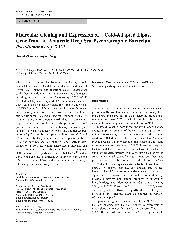摘要
A psychrotrophic bacterium producing a cold-adapted lipase was isolated from the deep-sea sediment of Prydz Bay, Antarctic and identified as a Pseudomonas strain. Determination of the nucleotide sequence of the gene encoding a lipase from Pseudomonas sp. 7323 (lipA) revealed that LipA is composed of 617 amino acid residues with a calculated molecular weight of 64,466 Da. LipA has a GXSXG motif, which is conserved in lipases/esterases and generally contains the active-site serine. The lipase purified from the Escherichia coli transformant (rLipA) by metal-chelating chromatography exhibited the same electrophoretic mobility as did the wild-type lipase (wLipA) purified from strain 7323, and both enzymes were quite similar in physicochemical properties. The optimal temperature and pH value for the lipases activity were 30 degrees C and 9.0, respectively. They were unstable at temperatures above 25 degrees C and only retained half of their highest activity after incubation at 60 degrees C for 5 min. These results indicated that the enzymes were typical alkaline cold-adapted enzymes. Both enzymes were particularly activated by Ca(2+). Additionally, the enzymes hydrolyzed p-nitrophenyl caprate and tributyrin at the highest velocity among the other p-nitrophenyl esters and triglycerides.
- 出版日期2008-9
- 单位厦门大学; 国家海洋局第三海洋研究所
